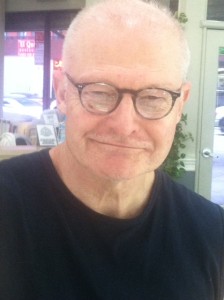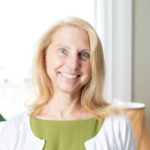Letters from the Editors:
Editor’s Letter by Gil Tunnell, PhD

This special issue of Transformance Journal on 16-session AEDP has two excellent introductions by Diana Fosha and Shigeru Iwakabe and needs no further introduction here. Instead, I use this space first to announce that Carrie Ruggieri, our Associate Editor, will now become Editor of Transformance Journal (I will become her Consulting Editor), and second, to reflect on my experiences as Editor for the last eight years.
Carrie has been co-editor for several years already and has contributed greatly to the Journal by designing a new masthead, her careful editing on previous issues, and interviewing authors on Transformance Talks. For this issue, she became a devoted hands-on editor by taking on more than her share of the workload. She has been a joy to work with, and I leave knowing the Journal is in very capable hands.
As several articles in this issue on 16-session AEDP discuss, successful termination in brief therapy includes both a celebration of accomplishments as well as saying Goodbye. In my eight years as Editor, eight issues were published from 2015 to 2023. That’s one issue per year. Although we anticipated publishing more frequently, in reality, it became very difficult coaxing AEDP therapists to submit manuscripts. Good therapists are not necessarily drawn to writing professionally once they complete their dissertations and theses! Although some manuscripts were voluntarily submitted, most had to be directly solicited by myself or other faculty.
I am proud we published special issue topics including, AEDP with couples, applying AEDP to special populations, strategies to help therapists “get unstuck,” tailoring AEDP interventions to different attachment styles, and providing an inside look at AEDP supervision from the perspectives of both trainee and supervisor. Most of the time the collaboration between author and editor went smoothly, with authors agreeing to clarify, expand or simplify, but not always!
In retrospect, I am most proud of the current issue on 16-session AEDP. Although the five articles here have different foci, several writers make the point that this abbreviated version of AEDP forces the therapist to distill the essentials of our model, rather quickly and perhaps with greater precision. The pressure of the time constraint for both therapist and patient is present from the get-go, and once the therapy takes root, many patients do not want it to end. Fosha’s introduction describes how the project had to “rediscover” Mann’s time-limited psychotherapy as termination became a real issue to be grappled with. I appreciate that the American Psychological Association granted permission for us to reprint large sections of Richard Harrison’s earlier excellent article on termination.
One last word: Just as this issue encourages our community of AEDP therapists to become AEDP researchers by taking on 16-session research patients, I encourage more AEDP therapists to become therapist-authors. Unlike most peer-reviewed journals, the informal nature of Transformance Journal utilizes extensive transcripts that vividly illustrate principal concepts of AEDP. Moreover, unlike peer-reviewed journals, authors are encouraged here to reflect on their personal and emotional experience as AEDP therapists, e.g., choice points, blind spots, struggles and handicaps, and reveal moments in sessions, now in retrospect, they might have managed differently.
After eight years as editor of Transformance Journal, I say Farewell and pass the baton to Carrie Ruggieri. Cue up the orchestra, Carrie!
Gil Tunnell, Ph.D.
Editor’s Letter by Carrie Ruggieri, LMHC

I am very excited and honored to follow Gil’s committed and diligent editorship. I am also very grateful for his mentorship and his trust in me by handing over this responsibility which he performed with great dedication and skill. One particular editorial task that Gil modeled for me was to be sure to truly understand the author’s intention and message. Through observing Gil’s editorial comments and conversations, as well as my own experience with Gil and earlier with Natasha Prenn, when she was editor prior to Gil, of feeling that click of recognition and true- otherness when being helped to formulate my thoughts more directly and clearly. I am amazed that AEDP-ness applies to editing as well as to therapy!
To all writers and potential writers I want to encourage you to send your ideas to me. We all have something very important to say and to share. If you have never written before, I am here to help you clarify and formulate the words and phrases that will best express your thoughts and experiences. It is astonishing to me, and also a victory, that I am writing an editor’s letter. From my early school years into college and graduate school I struggled with reading and writing. I remember the pure agony of having an insight, but not the vocabulary to express my thoughts; always asking, “what is the word for when…”. At the same time I was indeed a writer, from the age of 13 onward, writing in my private journals where I didn’t have to find the right words and learned to express myself, to myself. I feel great companionship with those who ache to master the precious and difficult gift of language. And, it was here, in this community, on the AEDP listserv that I was first acknowledged and seen and so kindly welcomed and responded to in the written format. It was by writing on the AEDP listserv that I began to experience some ease and mastery of what had been wrenching and frustrating.
This is all to say that deep and strong state 3 and state 4 (I re-wrote a narrative!) affects are and will be driving my enthusiasm and gratitude for the tasks ahead. It will be a joy to fulfill my part in lifting up voices, as mine has been so lovingly and skillfully lifted up within this community.
In addition to traditional scholarly and theoretical articles, I will be advertising for short form articles which will share a brief but highly compelling portion of a session that illustrates an AEDP intervention or conceptualization. I hope to receive many of these transcripts, through- out the year. Please stay tuned for more. I look forward to your beautiful AEDP work and ideas.
Carrie Ruggieri, LMHC
